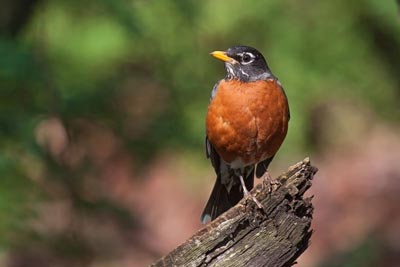Bird Watching
Tioga County has many Important Birding Areas (IBAs) as designated by the Pennsylvania Audubon Society.
Tioga County has many Important Birding Areas (IBAs) as designated by the Pennsylvania Audubon Society. Below are some of the most popular.
The Pennsylvania Grand Canyon overlooks at Leonard Harrison and Colton Point State Parks often offer views of bald eagles, hawks, ravens, and many types of warblers.
The Muck, or Marsh Creek area, is a 640-acre reclaimed wetland located approximately 3 miles from the Penn Wells that has reverted back from commercial farming to a completely natural state. Breeding marsh wrens, sora rails, Virginia rails, American bitterns, and Wilson’s snipes can be spotted often among its cattail marshes from March to October. A 35-nest great blue heron colony is a highlight of the habitat. For more information on “The Muck”, including map and directions, please visit www.pabirds.org.
The Hammond Lake/Ives Run recreational area is home to bald eagles, ospreys, sharp-shinned and Cooper’s hawks, red-tails, and broad-wings. More advanced birders may find their skills challenged by the abundance of swallows and many species of sparrows. Waterfowl, although not in the numbers one finds at a major wildlife refuge, are nevertheless plentiful depending on the time of year, and the area supports a sizable population of breeding warblers.
Cowanesque Lake is also an excellent birding location. The lake is known as a local hot spot for shorebirds, including semipalmated, least, solitary, and spotted sandpipers, dunlins, greater and lesser yellowlegs, black-bellied plovers, and killdeer. Both ospreys and bald eagles also nest here.
Hills Creek State Park has a number of different habitats within its confines, attracting a wide variety of birds to the area. The lake is a good waterfowl attractor, especially in the fall and spring. Common loons, double-crested cormorants, horned and pied-bill grebes, various diving and puddle ducks, tundra swans and, of course, the ubiquitous Canada geese can be found here. Swamp sparrows, yellow warblers, great blue herons, and wood ducks populate the numerous marshy areas, and, if you’re lucky, you may spot an American bittern. Other areas of the park attract red-breasted nuthatches, golden-crowned kinglets, ovenbirds, and red-eyed vireos.




